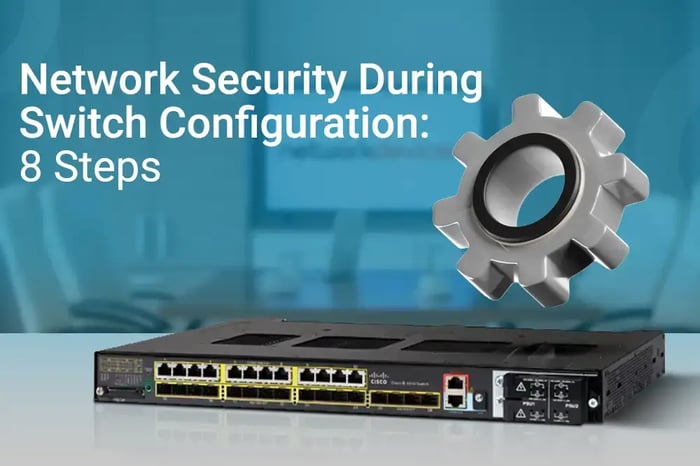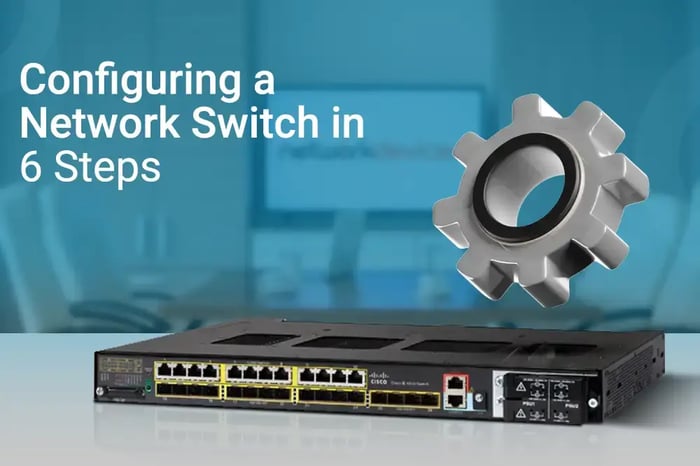You have no items in your shopping cart.

Network Switches 102 – Layer 2 vs. Layer 3
The network switches are the backbone of any network. They connect devices on a LAN (local area network) by using shared media such as Ethernet cables or wireless connections. It provides the physical pathway for data to travel from one device to another. This article will explore various network switch features, such as SFP, uplink ports, downlink ports, and layer 2 and layer 3 functionality.
What are Layers?
Let's start with the basics. OSI, Open System Interconnection, is a model that explains seven layers. Computer systems communicate with networks via these seven layers. It was developed during the late 80s for users and manufacturers as it lets people know which layer needs hardware or software.

What is a layer 2 network switch?
· Layer 2 network switches operate in layer 2 of the OSI model, the data link layer.
· Layer 2 is responsible for the communication between two physical nodes.
· The layer 2 switches work with MAC addresses.
· They have a single broadcast domain.
Ethernet is the protocol that runs on the data link layer of the OSI model. In an Ethernet network, all the systems are connected with a switch via an ethernet cable. Ethernet cables are physical cables that are connected to physical ports (Ethernet Ports) to provide connectivity with other systems and applications.

L2 network switches are mainly used for access layer and user connectivity due to faster data transmission and traffic because they work in a single broadcast domain.
When and why should you opt for layer 2 switches?
· Layer 2 switches are simple to set up and configure. As the routing characteristics are not entertained, the generic feature set eases much of the complexities.
· They can be deployed as link switches and can be the termination point for multiple ISP links.
· When deployed as an edge/link switch, the network becomes scalable for future needs and expansion.
If you have a small business or home network, going for a layer 2 switch would be beneficial in terms of performance and cost.
What is a layer 3 network switch?
Layer 3 or L3 switches function on the network layer of the OSI model, and internet protocol (IP) is used on this layer.
Layer 3 of the OSI Model Network provides data routing paths. Data is transferred in packets to the end device in an ordered format.

The layer 3 network switches provide a vast set of features, including:
· Routing characteristics and L2 features
· Forwarding data packets with the help of IP addresses
They don't recognize the MAC address when being used as an L3 network switch. Unlike L2 switches, these have a per-port broadcast domain, which means each port can simultaneously have its subnet and route packets.
These switches are primarily used in data centers and enterprise businesses, where demand for scalability and routing is high.
The connection method is the same regardless of routing capability for L2 and L3 switches. An L3 switch also connects with other devices in the network via the same RJ45 cable or an ethernet cable.
When and why should you opt for layer 3 switches?
Layer 3 switches are the best option regarding scalability and routing needs. Instead of buying a separate router and a switch, it would be economical to go for an advanced layer 3 network switch from Cisco, Juniper, or Aruba.

Layer 3 switches can be used to build and design secure data centers and enterprise networks. Layer 3 switch can also work as a perimeter switch that will likely distribute the overall internet traffic inside an organization.
The Difference: Layer 2 Switches vs. Layer 3 Switches
Need clarification on layer 2 network switches and layer 3 network switches? Follow the table below to decide and analyze key differences while buying a network switch.
|
Layer 2 Network Switch |
Layer 3 Network Switch |
|
Operates in the Data link layer of the OSI model |
Operates in the Network layer of the OSI model |
|
Works with Mac-Addresses |
Works with IP-Addresses |
|
Can operate at layer 2 only |
Capable of operating at layer and layer 3 |
|
Single broadcast domain |
Per-Port broadcast domain |
|
Ethernet Protocol |
Internet Protocol |
|
No routing support |
Can perform static and dynamic routing |
|
No Inter-VLAN routing |
Supports Inter-VLAN routing. |
|
Less expensive |
Highly expensive |
|
Faster traffic flow due to single broadcast domain |
Slightly slower due to multiple broadcast domains. |
What is an uplink port?
The uplink port generally connects to the network hierarchy's upper-layer or external devices. The term uplink can be defined as the connection via an uplink port that goes up the hierarchy. An uplink port connects various devices in the network, such as routers, switches, and firewalls, and allows data traffic transmission.
The uplink port generally acts as a WAN interface in standard network architecture, where multiple networking appliances are installed at various layers. It can process data faster than standard ports.
Some networking appliances have a dedicated uplink port for data flow and connection. The dedicated uplink ports can be 1G, 10G, 25G, 40G, or 100 G. In some cases, an uplink port can also have the option to install additional SFP modules to support and offer the required bandwidth and data transfer speed.

What is a downlink port?
Downlink ports function just opposite of uplink ports. A downlink port is used to connect to other devices in the network, such as desktops, AP, laptops, and phones that are lower in the network hierarchy.
Unlike uplink ports, a downlink port is not a dedicated port available on various appliances. Any other port than a dedicated uplink port can be used as a downlink port for connections. Downlink ports can also support and offer required data transfer speed and have options for additional SFP module installations.
What is a modular uplink port?
Unlike regular uplink ports, a modular uplink port means an external module must be installed or inserted into the standard uplink port to achieve the required bandwidth.

These external modules can be purchased with or without switches and firewalls. These modules can be 10G, 40G, 100G, and more. Modular uplink modules can be removed or installed at any time, unlike standard uplink ports, which are fixed and cannot be removed.
SFP, SFP+ and QSFP
SFP, SFP+, and QSFP may sound genuine or familiar to IT professionals, even if not from a networking background. Still, these terms can be confusing for non-technical people. So, let's know the basics first.

SFP stands for Small Form-Factor Pluggable. SFP, SFP+, and QSFP are a family of transceivers that connect to various SFP ports on a router, switch, or firewall. They connect to copper or fiber cables to achieve a higher data transfer rate.
The fiber optic or copper cable:
· May directly come from an ISP as an uplink connection
· Can be used to stack switches and firewalls, or
· Can be used for downlink connections to achieve the required data transfer speed
Various types of SFP are available in the market, each offering different data transfer rates and costs accordingly. Prominent vendors manufacture SFPs and SFP+ specifically for their devices and may not support other transceivers. In contrast, some vendors like Cisco produce their own device-compatible SFP modules while supporting other vendors' SFPs.
What is an SFP?
SFP, Small Form-Factor Pluggable, is a hot-swappable pluggable transceiver connecting SFP ports on a switch, router, or firewall. It supports Gigabit Ethernet, SONET, and Fibre channel communication standards. It is based on IEEE standards IEEE802.3 and SFF-8472.

Due to their compact design and build quality, SFPs replaced the traditional GBIC Gigabit Ethernet Interface Converter.
· An SFP transceiver can support data transfer speeds up to 4.25Gbps
· They can easily be found in various networking appliances such as switches, routers, and firewalls
· They can operate with both Single-Mode and Multi-Mode fiber cables
What is an SFP+?
An SFP+ transceiver can be called the elder sibling or an upgraded version of SFP that supports higher data transfer speeds of up to 10Gbps.
Both SFP and SFP+ look identical in build and size. However, SFP+ is an enhanced version capable of offering higher data speed than SFP transceivers. It is based on IEEE SFF-8431.
Surprisingly, SFP+ transceivers are the most popular 10G external modules available in the market due to their compact design and versatility.
An SFP+ port can support 1G SFP optics and operate at 1 Gigabit speed. However, the SFP+ transceiver cannot be installed on a 1G SFP port because the SFP+ module cannot operate in less than 1G.
What is QSFP?
The Quad Small Form-Factor Pluggable or QSFP is another hot-pluggable transceiver supporting higher data transfer speed than SFP and SFP+ modules. It is based on the IEEE SFF-8436 standard. QSPF can support speeds up to 40G and 100G.

In addition to Gigabit Ethernet, Fiber Channel, and SONET, QSFP also supports Infini-Band and SDH communication standards. They are priced slightly higher than SFP and SFP+ transceiver modules and can be found in 4*1G, 4*10G, and 4*28Gbps options.
REFERENCES:
https://www.imperva.com/learn/application-security/osi-model/
https://www.techtarget.com/searchnetworking/definition/Data-Link-layer













